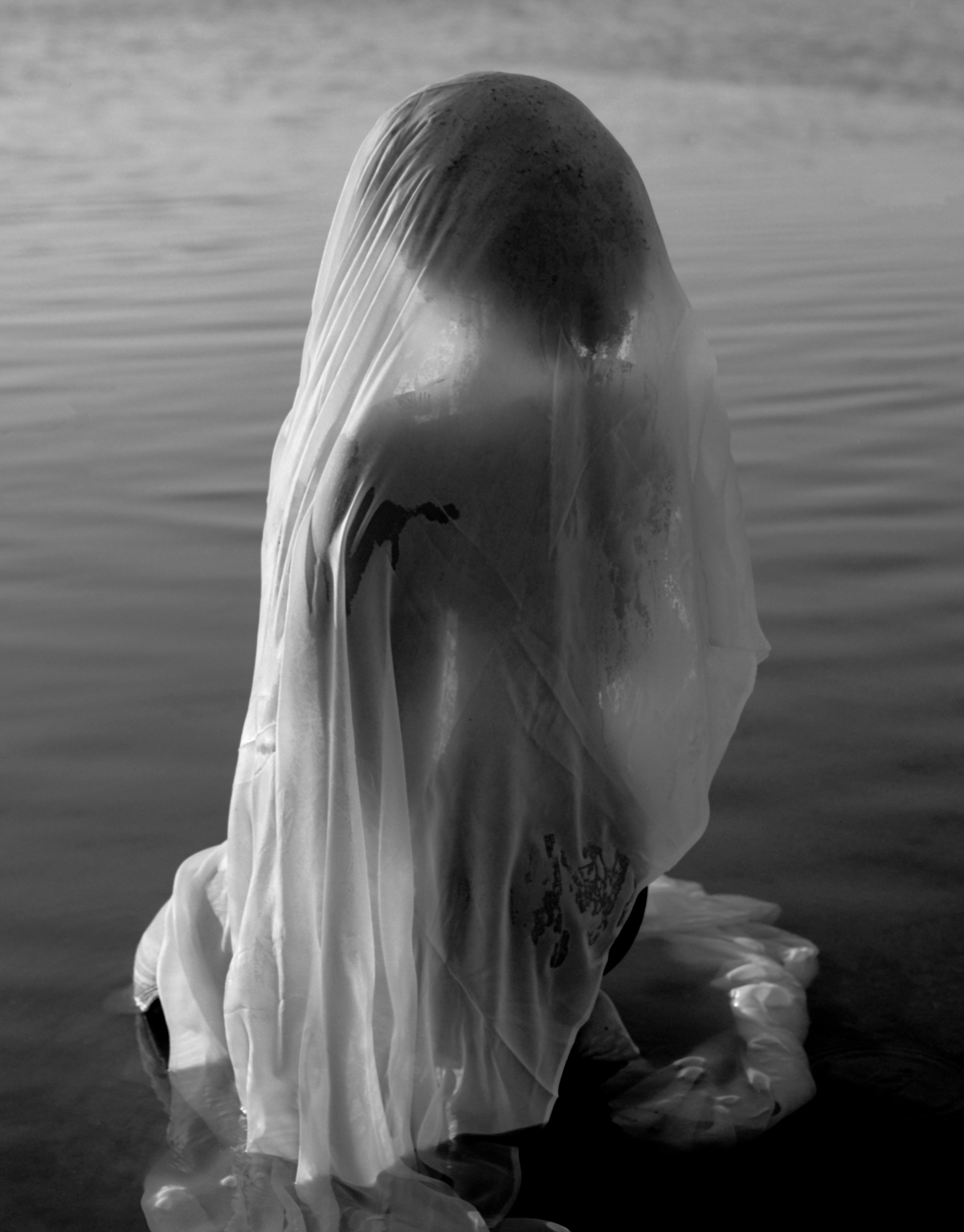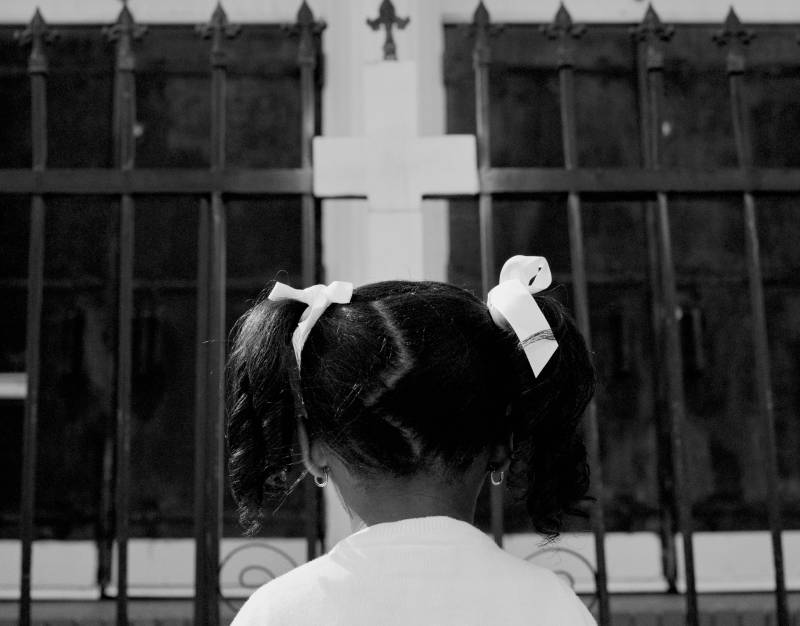Photographer Ashley A. Ross knew as early as high school that she wanted to pursue art as a career. After graduating from California College of the Arts in 2021, the Oakland artist has debuted her solo exhibition 10/27/03 at the Museum of the African Diaspora – up now through March 5 – as part of their Emerging Artists program. The series of staged photographs, intermingled with documents from her personal archive, reflect on her religious upbringing as an only child in a Black, Apostolic Christian household. KQED talked with Ross about the exhibition, her craft and the ways she’s exploring her point of view as an artist.
Ariana Proehl: Where did the concept for 10/27/03 come from?
Ashley A. Ross: The project began a few years ago when I came across some personal memorabilia I hadn’t seen in a while. There was a particular certificate describing “your new spiritual birthday” with the date “10/27/03” and it had scriptures on it. That sparked a lot for me because at that point in time I was in my early 20s, I was at CCA in my sophomore year. I was really searching for my calling and what I want to say with my art. It made me think about growing up in a religious environment with a specific doctrine that was heavily focused on this idea of rebirth, being “born again” and the concepts of sin and being a saint — all of these heavy concepts that we as adults still have a hard time trying to rationalize. And so it’s actually a certificate that I received when I was baptized and “born again” as a child. I pulled the name for the exhibition from that day and that certificate is actually in the show. I have a photo of me being baptized as a child, alongside portraits of my parents, portraits of this little girl who represents me as a child. And so I’m dealing with memory, the past and the present.
So what’s your relationship with these religious beliefs today? And what are your reflections coming out of putting the show together?
Right now, I don’t identify as a practicing Christian, but I think this project has been a great way for me to process these questions and these thoughts that I continue to have. People tend to have very strong opinions, either they’re against religion or really dedicated to their faith. But we don’t really talk about that in-between stage, you know, somebody who really doesn’t know, somebody who maybe has past experience with a religion and is kind of healing from that or is not far removed from that. Or somebody who is just like, “you know what? I don’t know what to think of it.” That’s what this project has meant for me, and it’s the conversation that I would like to have with other people.

Can you talk about the decision you made to showcase this particular work as your debut – to have portraits, staged photographs and archival material included? And what you wanted to reveal about your aesthetic as a photographer?



